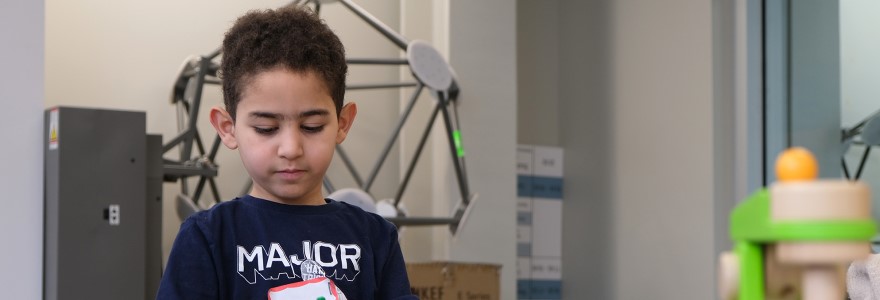News and Updates
Contact
Faculty of Social Science
Social Science Centre
Room 9438
Western University
T. 519-661-2053
F. 519-661-3868
E. social-science@uwo.ca
New study makes sense of sensory processing in autistic children
November 15, 2021
A child plays with sensory-based objects during a day camp in January 2020, held by the Sensory Perception Research lab at Western University. (Maggie MacLellan/Western Communications)
Results of a recent study on sensory abilities in autistic children may have positive consequences to the way supports are provided to them, helping increase their quality of life.
Western University psychology professor, Ryan Stevenson and Western BrainsCAN postdoctoral fellow Nichole Scheerer were part of a study that examined the sensory abilities of 599 autistic children. The results, published last month in Molecular Autism, found that sensory abilities can be grouped into five phenotypes or categories, revealing different sensory processing patterns. These categories were also found to predict autistic behavioural traits.
“We were looking for patterns to see if certain traits tend to co-occur together,” said Scheerer, first author of the study. “If someone tends to be more sensitive to sound, are they also going to be more sensitive to light? If someone is sensitive to textures and tactile stimulation (things like pain and temperature), are they also sensitive to tastes, but not sensitive to light?”

